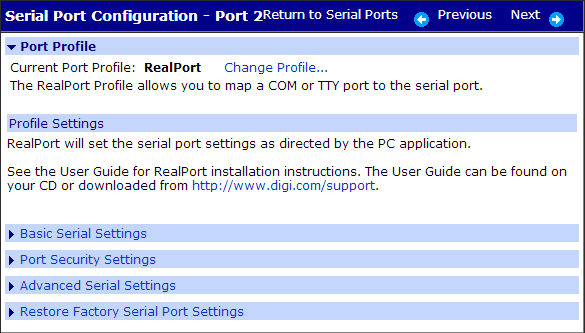RealPort port profile
The RealPort profile configures the serial port to interoperate with the RealPort Driver hosted on a network-based PC. When RealPort is installed on a network-based PC, it emulates a serial port. That is, the application “thinks” it is working with a real serial port, such as COM1. When the application sends data to this serial port, RealPort encapsulates the data and ships it across the network to the Digi device which in turn routes it to the serial device. This is also referred to as COM Port Redirection. The network is transparent to both the application and the device.
With RealPort, SSL encryption is supported in network port 1027. Standard RealPort service is on network port 771. Both can be configured on the Advanced Network Settings page. To use SSL encryption, you must have a RealPort driver that supports SSL. For Unix and Linux, you can use one of these drivers: Linux, Solaris, AIX, SCO Openserver 5.x and 6, and HP-UX. With Windows, you can use the Win2k/Xp/2003 driver online, which supports Encrypted RealPort (OpenSSL/TLS1.0 128-bit AES).
A simple challenge/response MD5 hash authentication is also supported by the Windows driver on fs1.

 PDF
PDF


